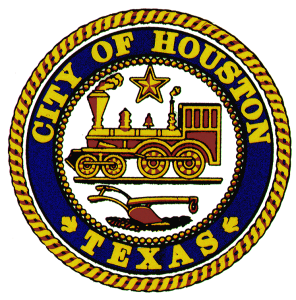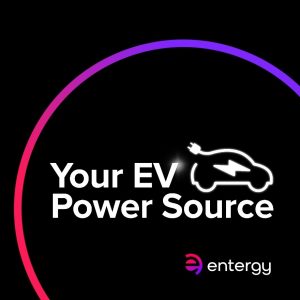Ghost towns are scattered across the American West. Why did some communities prosper, while others faded into history? Some mining communities folded up shop, when their mineral wealth diminished. Some died, when their water wells ran dry. Some though, were affected by simple economics, driven by decisions made by their leaders, citizens or outside organizations.
Take Rock Ridge, for example. This simple town rose in prominence, simply because the railroad had to detour around quicksand and as a result, was rerouted through their town.

Of course, I’m kidding. Rock Ridge was the town in Mel Brooks’ movie “Blazing Saddles.” However, there is a kernel of truth here. In the 18th century, the fate of many towns was determined by the decision to route the railroad through the town… or not. Railroads connected towns (like Los Angeles and Houston) with nearby seaports, fueling economic development. The seal of the city of Houston prominently shows a locomotive, although today, Houston is more commonly associated with the oil and gas industry and NASA.
Towns that had resources the trains needed, like coal or water for steam locomotives, would prosper when the railroad established a train station. The trains would stop to refuel and passengers would debark to dine at restaurants, drink at saloons and perhaps spend time browsing in the shops there. Those towns would become the destination for cattle drives and textile shipments, to be loaded onto freight trains, bound for stockyards, located in much larger population centers, like Chicago or Fort Worth. As I mentioned before, when the resources needed by the trains were depleted, unless other resources (like cattle and textiles) gave the trains a reason to stop, the trains would just pass them by and the towns would fade away.
In the 20th century, as the automobile became dominant, the railroads were displaced by highways, and many highways ran along routes originally created by the railroads. One of the earliest and most famous was Route 66, which ran from Chicago to Santa Monica, California. Towns along Route 66 prospered, as Americans took to the highways to travel and migrate to new cities. Route 66 influenced our culture and was memorialized in song, books and television. When the new interstate system was proposed, the towns that prospered, along Route 66, worked to keep it prominent. They didn’t want travelers to bypass their towns, due to the positive economic impact Route 66 had made.
So why the history lesson? Isn’t this blog about electric vehicles???
History is about to be made, driving habits changed and maps redrawn, by the move to electric vehicles. Now is the moment when some will see the opportunity and make the move that will breathe new life into their communities.
Up to this point, EV charging infrastructure has been predominantly placed in large cities. This has been critical for EV adoption for those who cannot charge at home or work and for people who who regularly drive more than 50 miles per day, making the slower, 110V charging impractical. Of course you can charge an EV with a 240V charger, but those in older homes may not have the electric service capacity and EV buyers of lower incomes, considering a preowned EV, may see the cost of an additional circuit and Level 2 charger as an insurmountable burden. However, with the exception of the Tesla “Supercharger” network, the development of charging infrastructure, specifically to enable cross-country driving, has lagged behind.
I strongly believe this disparity exists for several reasons:
- Communities have associated themselves with local, dominant fossil fuel industries and perceive installing charging infrastructure as a threat to their identity and way of life. Political leaders in these towns believe any involvement in EV charging infrastructure promotion would be political suicide rather than a boost to their career as local businesses prosper from the additional business EV drivers represent.
- Those who would benefit the most have failed to understand the coming opportunity and how or where to invest to get the biggest economic impact.
- Those who do see the opportunity are unaware of programs available to reduce the cost of implementing charging for their businesses and communities.
Here are some of my thoughts, specifically for those who fit the descriptions above:
- The world is changing. Before computers and the Internet became the economic drivers they are today, there was no “Silicon Valley.” Today, almost everyone on the planet knows what that is. You have the opportunity to participate in the next economic revolution, as EV adoption approaches its inevitable tipping point. Communities that install DC fast charging infrastructure will become the “railroad stops” of the 21st century. Don’t you want your community to benefit from this? This is not turning your back on the industry that contributed to your history and growth. It is diversification and economic growth, based on foresight. What leader doesn’t want to be associated with planning for a better future for his or her constituents?
- EV drivers will choose to take a route that goes through your town, specifically due to the charger(s). I know this because I’ve done it. When camping at Enchanted Rock last year, I shopped at Round Rock’s Premium Outlet Mall and drove to Kerrville, Texas specifically to charge our EV. During our two visits in Kerrville, we dined at restaurants and visited city parks to kayak and bicycle. We considered touring the James Avery Visitor Center, while in town, but ran out of time. I had no idea how nice a town Kerrville is and expect we will visit again, the next time we’re in the area. I am currently planning an EV trip from Denver to Olympia, Washington. I have been planning my route, focusing on two things: places I want to see and experience, as well as availability of EV charging facilities (of course). One route I am considering, goes through an area completely lacking DC fast chargers. This route passes through Prairie City, Oregon and I am going to stretch my range to get there, since the historic Hotel Prairie has a Level 2 charger that can recharge our vehicle, while we spend the night there. These are not gas stations. EVs take longer to “fill up” than gasoline-powered vehicles. If your Chamber of Commerce is considering installing chargers, like Kerrville did, make sure you locate them within walking distance of restaurants, movie theaters, art galleries, shopping districts, and other attractions. You’re not doing it just to be nice. Make the economic benefit better by being smart. Just ask your realtors what the three most important aspects are: “Location. Location. Location!” If you cannot locate the chargers near businesses, make sure to set up a shuttle service to get those EV drivers to places where they can spend money. Sometimes the location, most beneficial to your business, isn’t even in your town or state! For instance, there is zero DC fast charging located between the Dallas suburbs and the casinos in Shreveport, Louisiana, making the drive challenging for EV owners. Those casinos spend tons of money on billboards, along I-20, to attract Dallas/Fort Worth clientele, since DFW is one of the largest population centers in the U.S. Perhaps they should consider installing a bank of Volta chargers (which have large video displays) around the halfway point, in Tyler, Texas. Those casinos would be smart to display video programs about their shows, performers and jackpots on those Volta chargers’ video displays. Hotels can attract clientele by having lower cost Level 2 chargers available to their guests and patrons of their restaurants. EV drivers have gotten into the habit of calling hotels to see if charging is available.I know this because I’ve done it. Level 2 charging, although not the best for long-distance drivers, is great at hotels because guests can fully charge their vehicle while they sleep (or swim in your pool, workout in your gym, dine in your restaurant or take advantage of other services your hotel provides).
- Federal tax incentives are available to businesses that install chargers. This is probably going to increase, under the current (pun intended) administration, which is pushing to accelerate EV adoption. Many states and electric utilities also offer incentives. Coupled with Chambers of Commerce efforts to share the cost across member businesses (who stand to directly benefit) can make the project cost much easier to handle.
So get on the train to prosperity, America!



